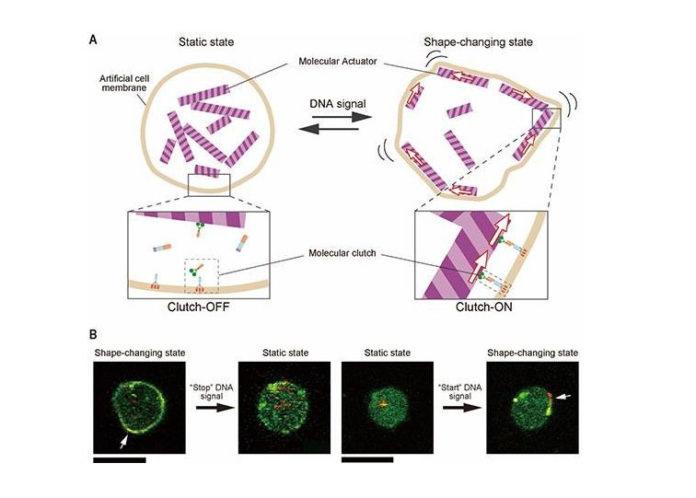The continues process of molecular nanotechnology has opened the door to molecular robotics. This uses molecules as robot components. By taking advantage of it, scientists from Tohoku University in collaboration with Japan Advanced Institute of Science and Technology have developed a new molecular robot. The most mind-blowing feature of this robot is it can start and stop its shape-changing function in response to a specific DNA signal. Thus, scientists named it as a shape-shifting molecular robot.
According to scientists, this shape-shifting molecular robot could behave like living organisms.
Generally, molecular robots are built by integrating molecular machines. Such types of systems could lead to a bio-inspired robot designed on a molecular basis.
This time scientists have developed this new molecular robot in very small size. It has a size of about one millionth of a meter. Scientists composed molecular actuators and a molecular clutch in this robot. The molecular actuators consist of proteins while the molecular clutch composed of DNA. Due to its actuators, the robot can change its shape. At the other hand, the molecular clutch controls the force generated by the actuator.
Associate Professor Shin-ichiro Nomura said, “With more than 20 chemicals at varying concentrations, it took us a year and a half to establish good conditions for working our molecular robots. It was exciting to see the robot shape-changing motion through the microscope. It meant our designed DNA clutch worked perfectly, despite the complex conditions inside the robot.”
“This is for the first time, a molecular robotic system has been able to recognize signals and control its shape-changing function.”
It is expected that this shape-shifting molecular robot can expand the possibilities of robotics engineering. Scientists reported, this could help in technological developments to solve important medical issues. For example, a treatment robot for live culturing cells and a monitoring robot for checking environmental pollution.
Professor Dr. Friedrich Simmel said, “Based on this achievement, in the future similar systems could be developed that display artificial phototaxis or chemotaxis, or similar ‘intelligent’ behavior.”
